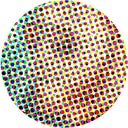Design the Future of America
In order to make it around this corner, we need to think more about new ideas, and less about the old. Let’s start really basic.
One missing piece of our democracy lives in the place between our Representatives and ourselves. Between the problems people experience and the solutions we seek.
We need the courage to imagine new ways of doing things together. We need a process and tools to make this experience transparent, participatory but not obligatory… we need it to feel good.
What if?
Citizens + Community Design (a designer led processes) + Tools (collaboration software) + Representation = Participatory democracy
How might we create an impact?
What if community focused designers are the future of America (or even the world)? Designers are employed to facilitate solution building in collaboration with our Citizens, to solve our collective problems for our Representatives.
Imagine this
For every issue we wanted to solve (affordable health care) our Representatives would create a “Design Challenge” for the community.
Imagine this process acts both collaboratively and competitively. Each community brings its own spirit and perspective that we will use to test, measure and improve solutions to our real world problems. I imagine that our citizens should be able to participate from home or virtually anywhere. They should understand a path to become a designer or government representative if they are interested in this type of position.
It could be broadcast (open invitation) digitally but engaging and interactive.
What might this be like?
Designers make proposed solutions to community problems and participants can contribute from home.
[ X ] number of Designers manage what are essentially different Zoom based communities. They ask Participants the important questions, quantify results and extract direct feedback.
Participants can contribute from anywhere, desktop or mobile experiences (with public terminals available at the community post office or library). Each citizen is encouraged to participate (link to UBI citizen bonuses?). A person might choose to get a text message notification (asynchronous), they would click a link to enter a community feedback engine. It might feel like a Jackbox TV experience (check out https://www.jackboxgames.com/ if you want to play along with the analogy). Open input (with bucket based sorting for designers) / Voting favorites. Game like dynamics.
Representatives take information from the Information Designers who explain the input they are getting from the public and the co-created solutions they’ve come up with.
These could go through a matchup engine, just like judging which of each kitty is more cute (check out http://www.kittenwar.com for a pattern). Which policy is best. Watch the three minute video, read the 5 minute overview (optional), then vote.
At the end of the process the reps propose their communities’ desired outcome. Implementation details and costs are derived and the process is sent back to the public for input on which of these solutions should be voted on.
The competition for attention
At the end of the day, there are influences that compete for our attention. One of the ways to deal with these competing ideas is to design a process by which to handle them. This process might require collaboration in imagining, testing and definitely building the tools by which it will become efficient. It’s not going to build itself.
